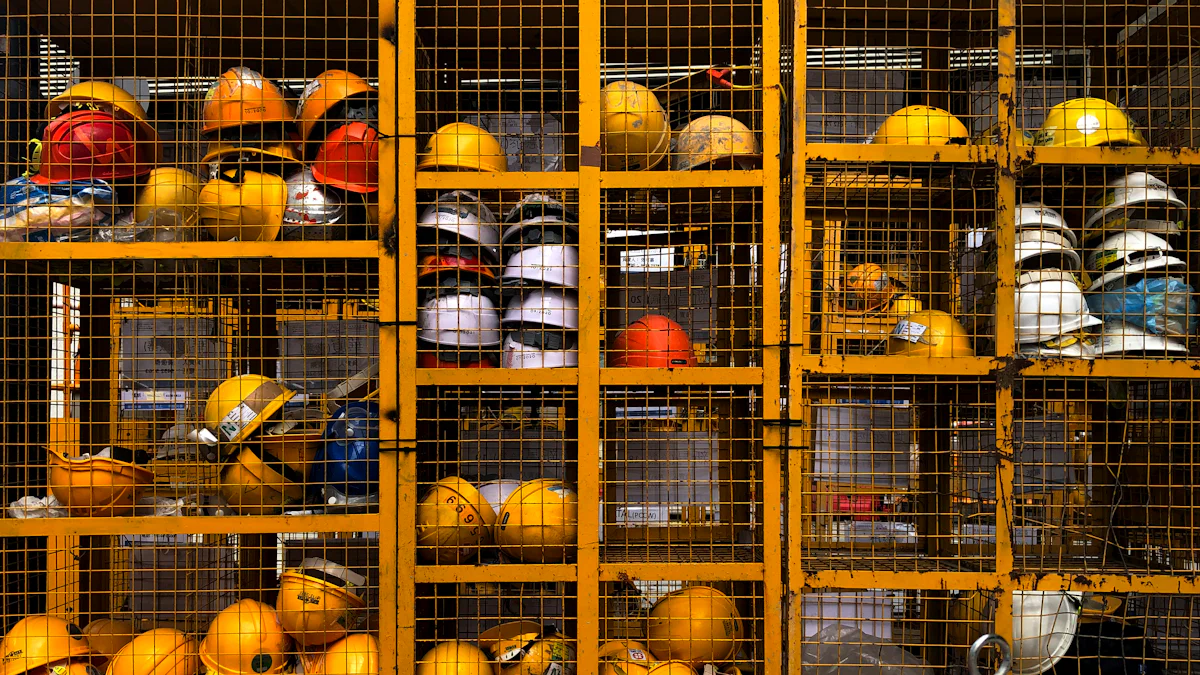
When operating a pallet jack, maintaining the correct stance is paramount for both safety and efficiency. In this blog, readers will delve into the crucial aspects of proper posture and technique when using a pallet jack. Understanding the significance of a solid foundation in handling this equipment can prevent workplace injuries and enhance overall productivity. By adhering to the guidelines provided, individuals can ensure a secure working environment while maximizing their operational capabilities.
Understanding the Basics of a Pallet Jack
What is a Pallet Jack?
Pallet jacks, also known as Pallet Trucks, are essential tools in various industries for transporting heavy loads efficiently. They utilize hydraulic systems to lift objects with ease, making them versatile and practical for warehouse operations.
Definition and Purpose
Pallet jacks are wheeled devices designed to lift and move heavy pallets without excessive physical strain. Their primary purpose is to streamline material handling processes, ensuring swift and safe transportation of goods within warehouses.
Types of Pallet Jacks
- Standard Pallet Jacks: These traditional models are widely used for their simplicity and effectiveness in lifting pallets.
- Scissor Pallet Jacks: Offering enhanced functionality, these models allow operators to elevate pallets to convenient working heights, improving operational efficiency.
Why Proper Stance is Crucial
Maintaining the correct stance while operating a pallet jack is vital for ensuring both safety and productivity in the workplace. By adhering to proper posture guidelines, individuals can significantly reduce the risk of injuries and enhance overall operational efficiency.
Safety Considerations
Safety should always be a top priority when using a pallet jack. Regular maintenance checks, proper load stability assessment, and adherence to safety protocols are essential to prevent accidents and ensure a secure working environment.
Efficiency and Productivity
Implementing the correct stance not only enhances safety but also boosts operational efficiency. By maintaining proper posture and technique, workers can optimize their movements, leading to increased productivity levels within the warehouse setting.
Step-by-Step Guide to Proper Stance

Initial Positioning
Approaching the Pallet Jack
- Stand behind the pallet jack with a firm stance, ensuring stability before engaging with the equipment.
- Position yourself close to the handle, maintaining a safe distance from any potential obstacles in your surroundings.
Foot Placement
- Place your feet shoulder-width apart, distributing your weight evenly to establish a solid foundation.
- Ensure that your feet are firmly planted on the ground, providing support for any movements while operating the pallet jack.
Hand Placement
Correct Grip
- Grasp the handle of the pallet jack with both hands, ensuring a secure and comfortable grip.
- Keep your wrists straight and aligned with your forearms to maintain control over the equipment at all times.
Common Mistakes to Avoid
- Avoid gripping the handle too tightly, as this can lead to unnecessary strain on your hands and arms.
- Refrain from using only one hand to operate the pallet jack, as it may compromise stability and control during maneuvers.
Body Posture
Maintaining a Neutral Spine
- Keep your back straight and upright while operating the pallet jack, preventing any undue stress on your spine.
- Engage your core muscles to support your posture and minimize the risk of back injuries during handling tasks.
Engaging Core Muscles
- Focus on tightening your abdominal muscles to provide additional support for your lower back when moving loads.
- By engaging your core, you enhance overall stability and reduce the likelihood of strain or discomfort while using the pallet jack.
Movement and Maneuvering
Pushing vs. Pulling
- When operating a pallet jack, the choice between pushing and pulling plays a crucial role in maneuvering the equipment effectively.
- Pushing the pallet jack allows for better visibility of the load and enhances control during transportation.
- Pulling the pallet jack might be necessary in tight spaces or when navigating through obstacles with limited clearance.
- Operators should assess the workspace to determine whether pushing or pulling is the most suitable method for the task at hand.
Navigating Turns and Obstacles
- Maneuvering around corners and obstacles requires precision and attention to detail to avoid accidents or damage to goods.
- When making turns, operators should maintain a wide stance to provide stability and prevent tipping of the pallet jack.
- Slow, deliberate movements are essential when navigating through narrow passages or congested areas within the warehouse.
- By anticipating potential obstacles and planning routes in advance, operators can ensure smooth navigation while safeguarding both themselves and the transported goods.
Safety Tips and Best Practices

Regular Maintenance Checks
Inspecting the Pallet Jack
- Inspect the pallet jack regularly to identify any signs of wear or damage.
- Look for loose bolts, damaged wheels, or hydraulic leaks that may affect the equipment’s performance.
- Ensure all components are in proper working condition before each use to prevent accidents and malfunctions.
Ensuring Load Stability
- Prioritize load stability by checking the weight distribution on the pallet jack.
- Secure the load with straps or shrink wrap to prevent shifting during transportation.
- Verify that the load is within the recommended capacity of the pallet jack to avoid overloading and potential hazards.
Personal Protective Equipment (PPE)
Recommended Gear
- Wear appropriate PPE such as safety gloves, steel-toed boots, and high-visibility vests when operating a pallet jack.
- Protect your hands from cuts or abrasions and ensure proper foot protection against heavy loads.
- High-visibility clothing enhances visibility in busy warehouse environments, reducing the risk of collisions.
Importance of PPE
- Emphasize the importance of wearing PPE to mitigate workplace risks and injuries.
- PPE serves as a protective barrier between operators and potential hazards, safeguarding their well-being.
- Compliance with PPE guidelines demonstrates a commitment to safety standards and promotes a culture of responsibility in the workplace.
Common Mistakes and How to Avoid Them
Overloading the Pallet Jack
- Avoid exceeding the maximum weight capacity specified for your pallet jack model.
- Distribute heavy loads evenly across the forks to maintain balance and stability during transport.
- Overloading can strain the equipment, leading to mechanical failures and compromising operator safety.
Incorrect Lifting Techniques
- Follow proper lifting techniques when engaging with heavy loads on the pallet jack.
- Bend at the knees, not at the waist, to lift objects safely without risking back injuries.
- Use mechanical aids or team lifting methods for exceptionally heavy items to prevent musculoskeletal strains.
In conclusion, mastering the proper stance and technique when operating a pallet jack is fundamental to ensuring a safe and efficient work environment. By adhering to safety protocols and maintaining correct posture, individuals can significantly reduce the risk of accidents and enhance overall productivity. Remember to never overload the pallet jack, always push instead of pull for better control, and prioritize wearing appropriate PPE for added protection. Implementing these guidelines not only safeguards against injuries but also optimizes operational performance in warehouse settings.
Post time: Jun-29-2024
